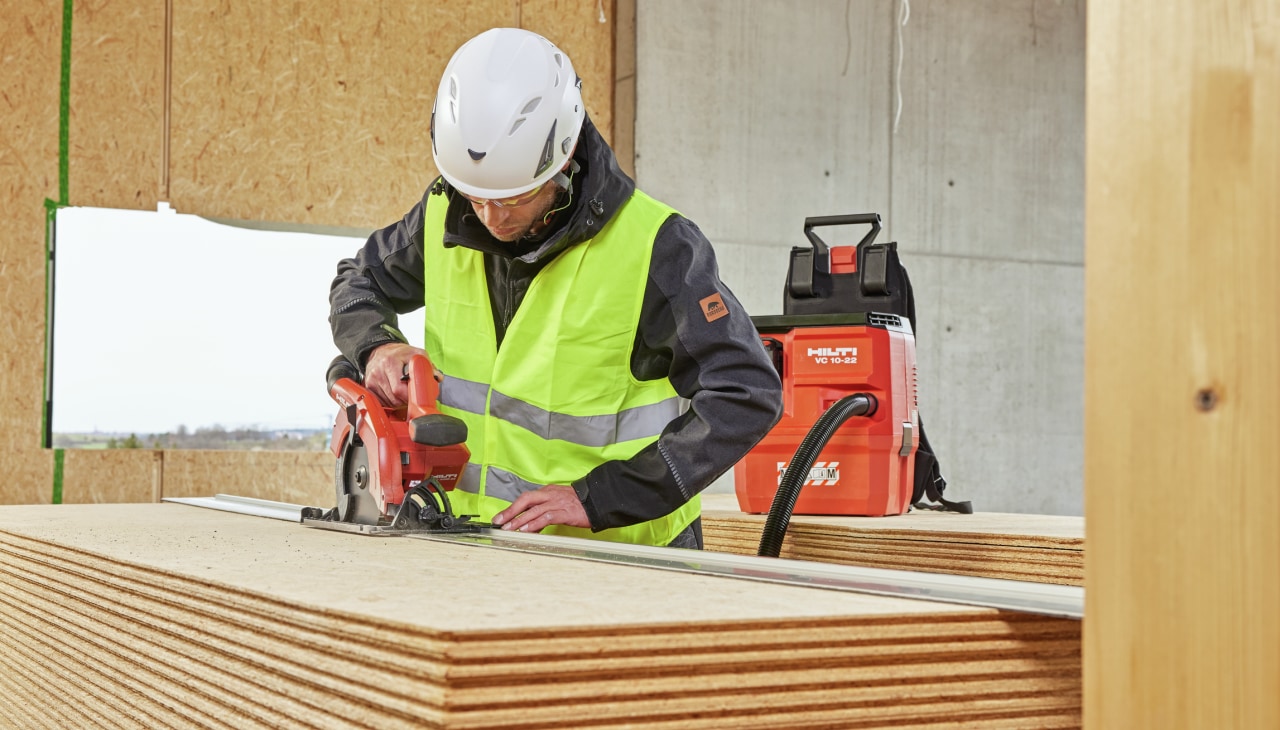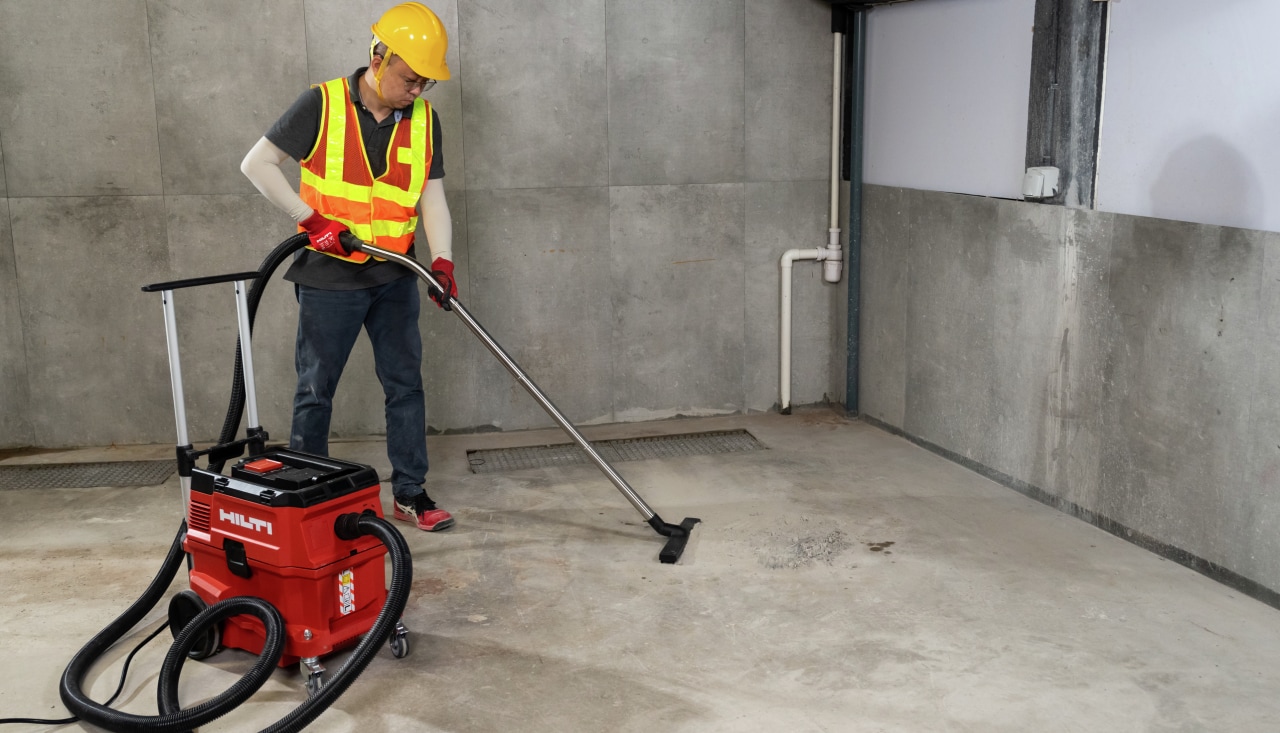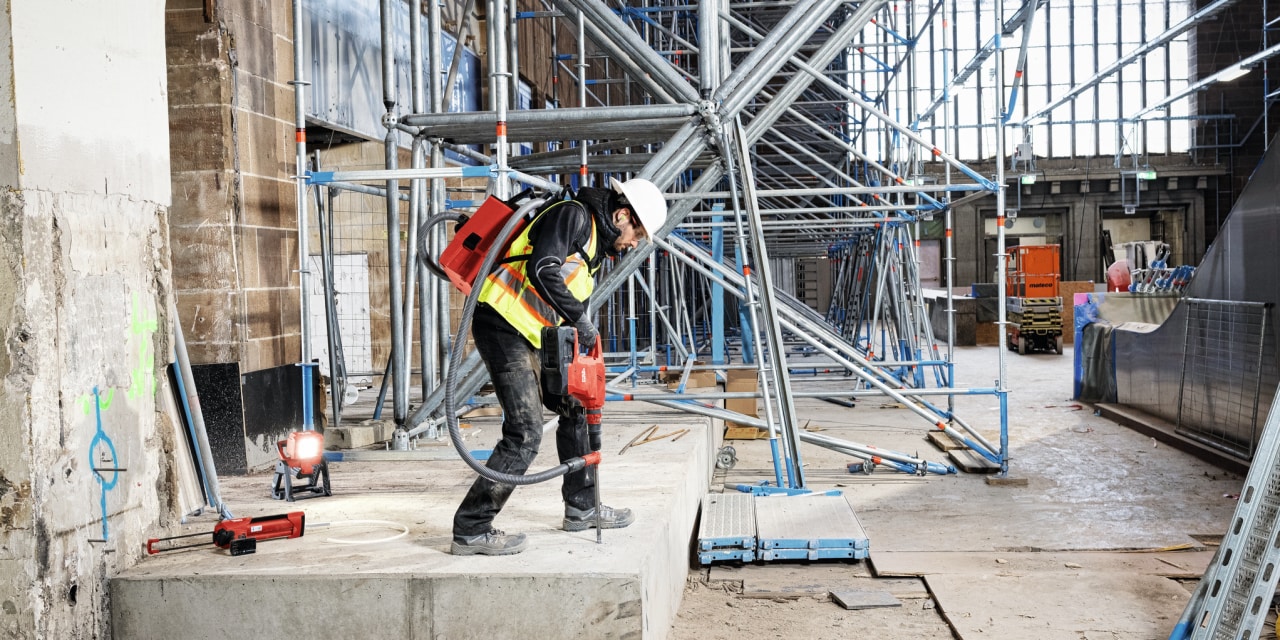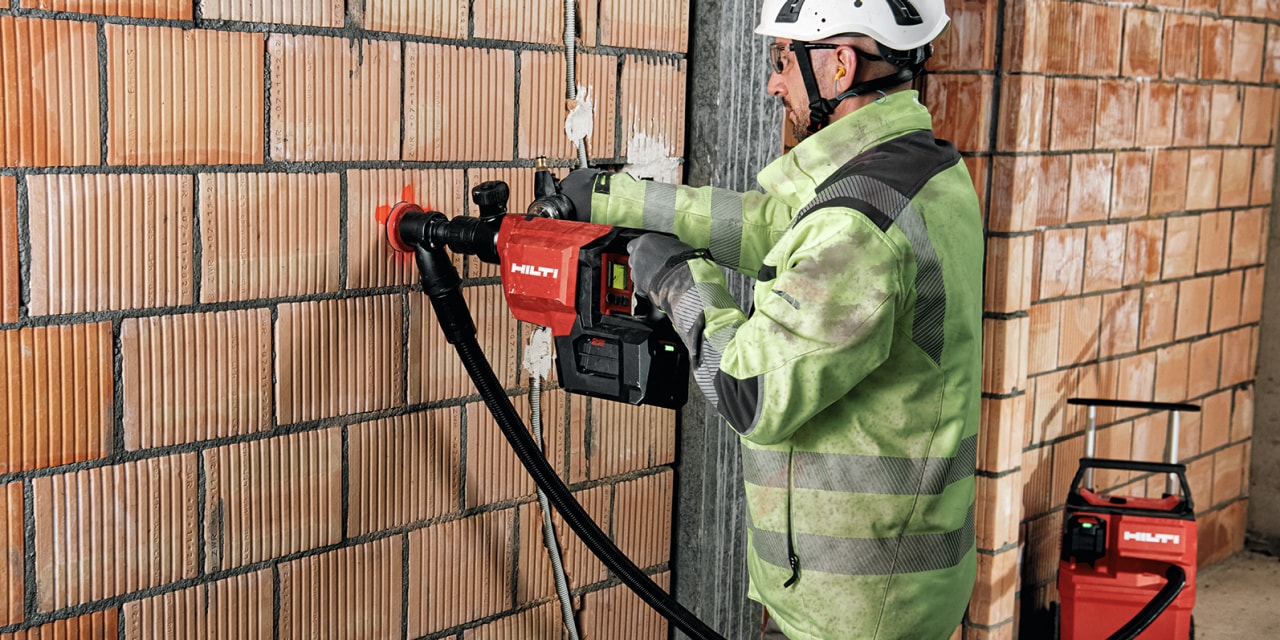- Home
- Solutions
- News and Events
- Hilti Blog
- A Brief History and Look Ahead On The Vacuum Cleaner

5 min. read, August 2025
The evolution of the vacuum cleaner
Construction sites have arguably a greater need for vacuums than anywhere else. Dust and other hazardous particulate matter presents a serious health and safety risk. In the UK, as many as 500 deaths a year are linked to present or past exposure to construction dust on site.*
The vacuum cleaner is one of the most popular inventions of all time. Almost all homes have one, and construction vacuums are essential on every site for health and safety.
They also have a fascinating history from humble beginnings at the turn of the 20th century, to state-of-the-art technology like the Hilti VC 5L which is emerging onto the market and resetting the standard for construction vacuums.
Brief History
20th century origins as a luxury product
American inventor James Spangler is widely credited with the design and production of the world’s first portable, electrically powered vacuum cleaner. Working in 1908, he patented the technology and then sold those patents to a certain William Hoover – a man whose name came to be synonymous with the vacuum cleaner.
Hoover was impressed by his wife’s Spangler vacuum and was able to manufacture them in large numbers, leading to great commercial success. His products were marketed at affluent households which would have previously employed servants, and they emphasised the cleanliness and hygiene benefits on offer.
The journey to mass adoption
Vacuums continued to evolve with more efficient electric motors, filters, lights and retractable cords as the technology became increasingly popular. However, the market settled on two main forms – upright and tank or cylinder – which would dominate for most of the century.
The big differences came in design. European manufacturers involved architects and industrial designers to make their products stand out from the crowd. American companies soon followed suit, and vacuums turned from a chunky, functional product into a stylish, must-have appliance.
Dyson changes the market, inspired by construction technology
In the 1990s, Dyson arrived with the first true vacuum innovation in over 80 years. The company’s bagless cyclonic system was a revolution in the world of vacuums and it soon took over the market. More efficient, less hassle and superior cleaning made it a favourite around the world.
James Dyson’s invention was inspired by construction technology. He witnessed sawdust being removed from a site by an industrial cyclone vacuum and wondered whether he could shrink that down for use in the home. 15 years and 5,000 prototypes later, the first Dyson was born and vacuums have only continued evolving since – wet/dry vacuums, automated vacuums and more have all made the technology more useful than ever.

Construction vacuums of the future from Hilti
Hilti’s range of efficient construction vacuums is growing all the time as we aim to provide the best products on the market. We want to keep you safe, keep your site clean and hygienic, and offer technological solutions which boost your productivity.
Our latest addition to the construction vacuum range is the VC 5L which provides a range of distinct benefits:
- Improved clean ups – Tough, agile corded vacuum helps keep your jobsite more efficiently than ever before in wet or dry conditions.
- More robustness – Rubber wheels, a compact footprint, ergonomic handles and a reinforced tank make this a more robust vacuum.
- Filter cleaning – Push-button filter cleaner helps remove dust/clogs to keep suction performance high and speed up your clean-ups so there are no stoppages on site.
- Optional on-board accessory storage – Tubes, cables and nozzles can be kept within easy reach, cutting down on set up time.
- Improved health and safety – Reduced daily exposure to harmful dust, increased visibility and no contamination of surroundings.
- Sustainability – Zero plastic packaging, no ink printing on the box and only recycled cardboard used throughout.



